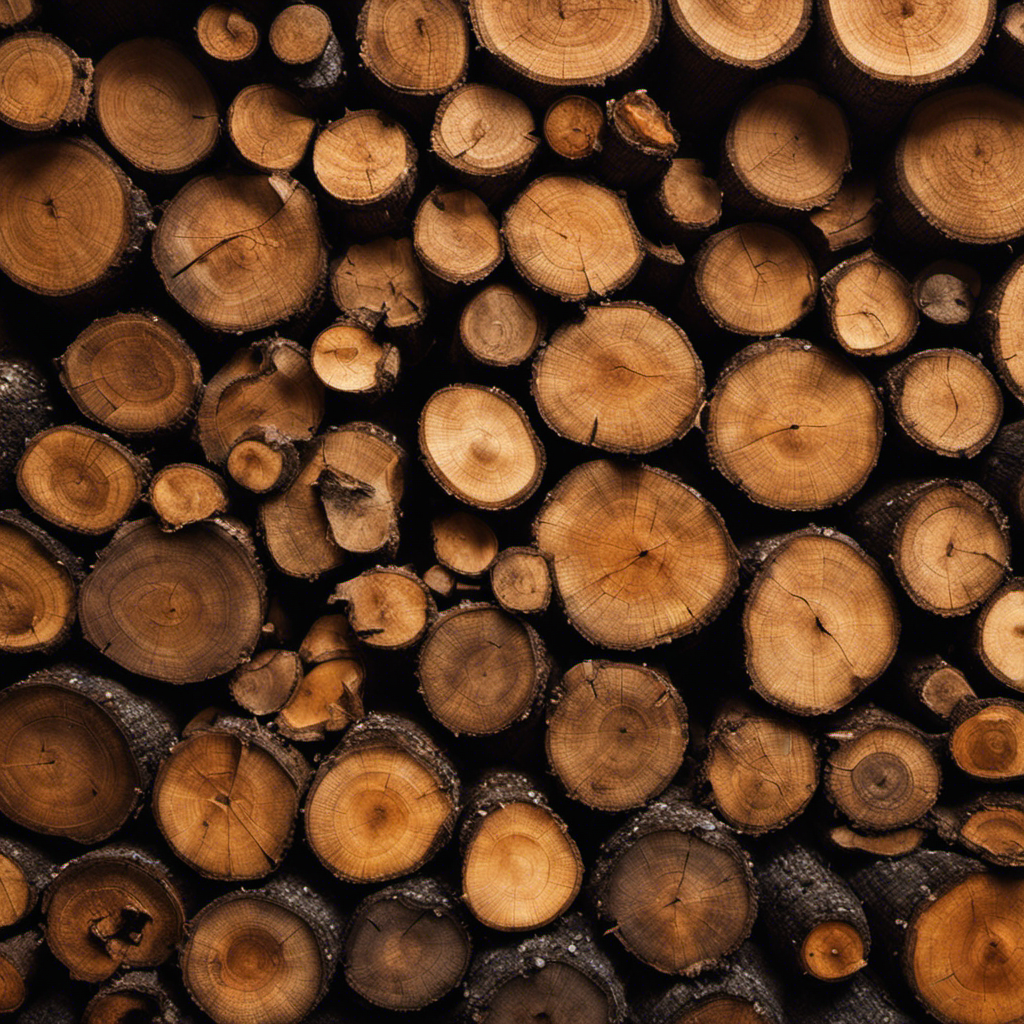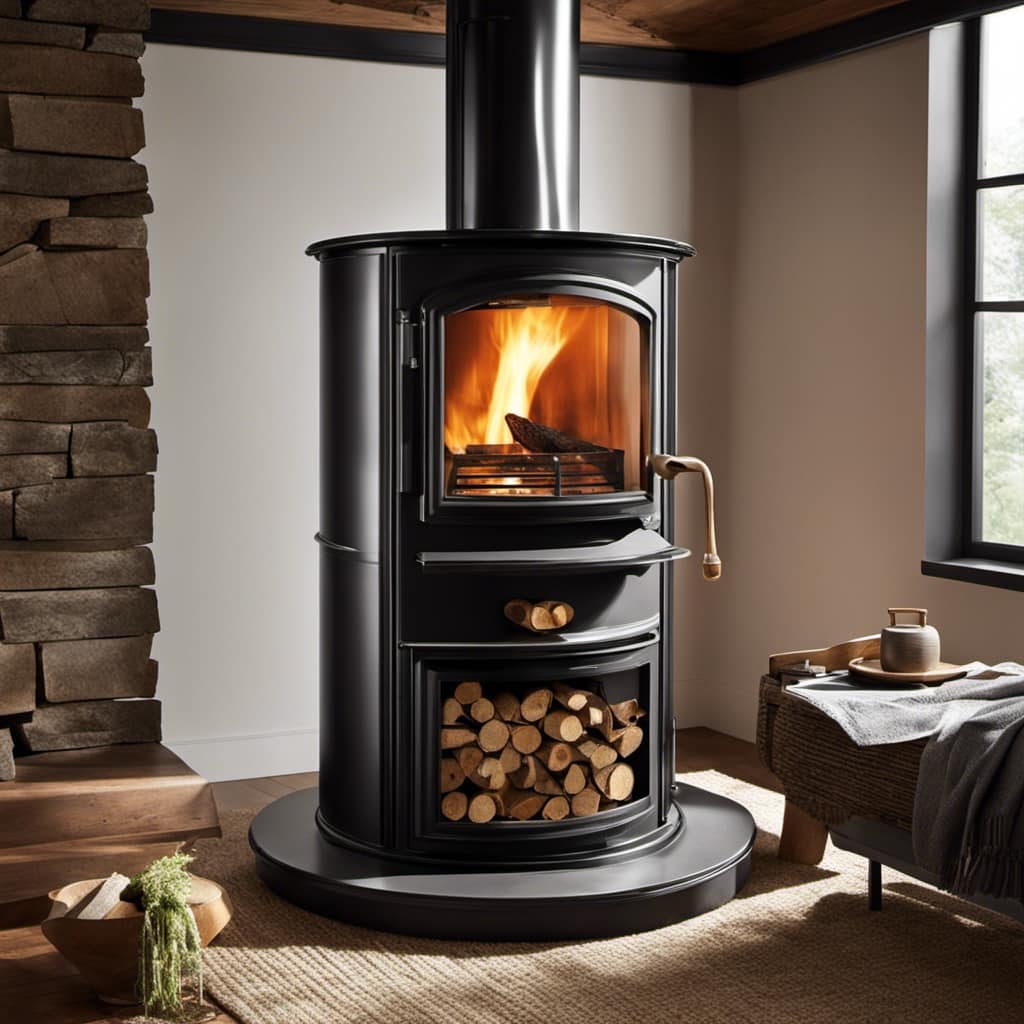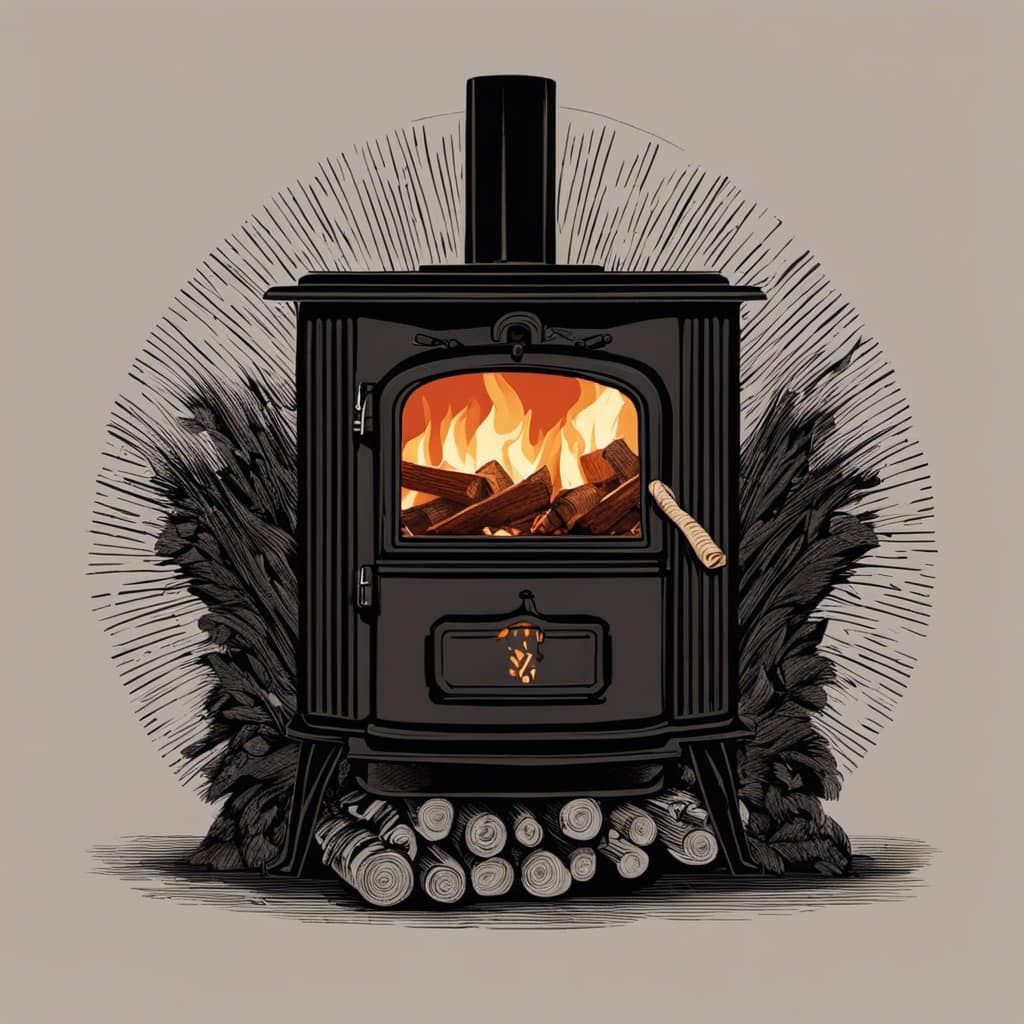When it rains and my firewood gets wet, I find myself thinking of ways to make it usable again for my wood burning stove. Don’t worry, as I have discovered ways to restore the functionality of waterlogged wood.
In this article, I will guide you through the process of assessing the damage, properly drying the firewood, and storing it for future use. With a few tips and tricks, we can ensure your wood stove burns efficiently, even with rained-on wood.
Key Takeaways
- Assess the damage and moisture levels of wood stove after rain exposure
- Properly dry wet firewood by splitting it, stacking it in a well-ventilated area, and regularly checking its moisture content
- Store rained on wood in a covered firewood rack, using tarps or covers, or raised pallets to prevent further moisture absorption
- Prevent future wood soaking by using waterproof tarps or covers, elevating firewood off the ground, and providing proper ventilation
Assessing the Damage
I’m examining the wood stove to see if any damage occurred. One of the key factors in determining wood stove safety after exposure to rain is evaluating the wood moisture levels.
Moisture can negatively impact the efficiency and safety of the wood stove. Wet wood takes longer to ignite, produces less heat, and can cause excessive smoke and creosote buildup in the flue.
To assess the moisture levels, I carefully inspect the wood for signs of dampness, such as a darker color, softness, or a musty smell. Additionally, using a moisture meter can provide accurate measurements.
If the wood moisture levels are high, it’s crucial to allow the wood to dry thoroughly before burning it in the stove. This ensures efficient combustion and minimizes the risk of chimney fires.
Properly Drying Wet Firewood
After a heavy rain, it’s important to allow at least 6 months for properly drying wet firewood before using it in the wood stove. Wet firewood contains a high moisture content, which can cause several issues when burned. To ensure efficient and safe use of firewood, here are three drying techniques to consider:
-
Splitting the wood: By splitting the wood into smaller pieces, you increase the surface area for evaporation, allowing the moisture to escape more easily.
-
Stacking the wood: Properly stack the wood in a well-ventilated area, preferably off the ground. This promotes airflow and helps the wood dry more evenly.
-
Time and patience: Drying firewood takes time. Six months is the recommended minimum, but longer drying periods can yield even better results. Regularly check the moisture content with a moisture meter to ensure it reaches a suitable level for burning.
Storing Rained On Wood
I need to find a suitable storage solution for the rained on wood to prevent further moisture absorption. Storing wet firewood can be challenging, as the excess moisture can lead to issues such as difficulty in lighting the fire and increased smoke production. To help you better understand how to store wet firewood effectively, here is a comparison table showcasing different storage options:
| Storage Option | Pros | Cons |
|---|---|---|
| Covered Firewood Rack | Provides protection from rain | Limited capacity and requires additional space |
| Tarps or Covers | Cost-effective solution | Traps moisture if not properly ventilated |
| Raised Pallets | Allows airflow and drainage | Limited protection from rain |
Now that we have discussed various storage options, let’s move on to some tips to prevent future wood soaking.
Tips to Prevent Future Wood Soaking
To keep your firewood dry and prevent future wood soaking, consider using a waterproof tarp or cover. This simple step can make a big difference in preserving the quality of your firewood and preventing wood rot. Here are three tips to help you prevent future wood soaking:
-
Choose a waterproof tarp or cover: Look for a tarp or cover that’s specifically designed to keep water out. Make sure it’s large enough to fully cover your firewood stack and secure it tightly to prevent water from seeping in.
-
Elevate your firewood: Place your firewood on a raised platform or pallet to keep it off the ground. This helps to prevent moisture from the ground from seeping into the wood and causing it to soak.
-
Provide proper ventilation: Allow for proper airflow around your firewood stack by leaving space between the wood and the tarp or cover. This helps to prevent condensation and moisture buildup, which can lead to wood rot.
Maximizing Efficiency When Burning Wet Firewood
I can improve the efficiency of my fire by properly drying and burning wet firewood. When firewood is wet, it contains a significant amount of moisture, which hinders its ability to burn efficiently. This not only leads to a smoky fire but also wastes energy and increases environmental impact. Burning wet firewood releases more pollutants into the air, contributing to air pollution and potentially harming respiratory health. To maximize efficiency, it is crucial to properly dry the firewood before burning it. This can be done by storing the firewood in a dry and well-ventilated area for at least six months. Additionally, using firewood alternatives like pellets or compressed logs can provide a cleaner and more efficient burn. By taking these steps, we can reduce the environmental impact of burning wet firewood while enjoying a more efficient and environmentally-friendly fire.
| Firewood Alternatives | Environmental Impact |
|---|---|
| Pellets | Lower emissions, cleaner burn |
| Compressed Logs | Consistent burn, reduced moisture content |
| Natural Gas | Cleaner burn, minimal pollution |
| Electric Fireplace | No emissions, energy-efficient |
Conclusion
In conclusion, it’s crucial to properly assess and dry wet firewood that has been rained on before using it in a wood stove. By ensuring the wood is completely dry, you can maximize efficiency and prevent issues such as excessive smoke and poor heat output.
Storing the wood correctly and taking preventative measures can also help avoid future soaking. Remember, taking these steps will ensure a more enjoyable and efficient wood-burning experience.
Logan’s affair with adventure began in childhood. He hailed from a small town where vast forests bordered one side and endless shores stretched on the other. His days were spent exploring uncharted woods, climbing tall trees, or listening to the tales of old sailors. This early immersion in a world brimming with stories and mysteries became the foundation of his passion for writing.











